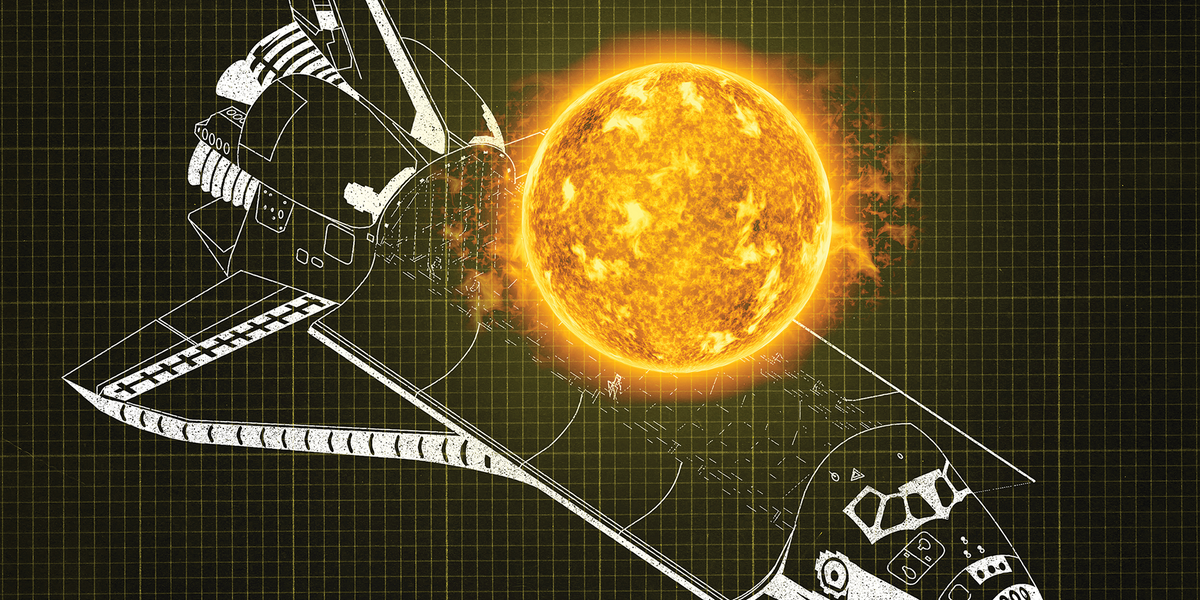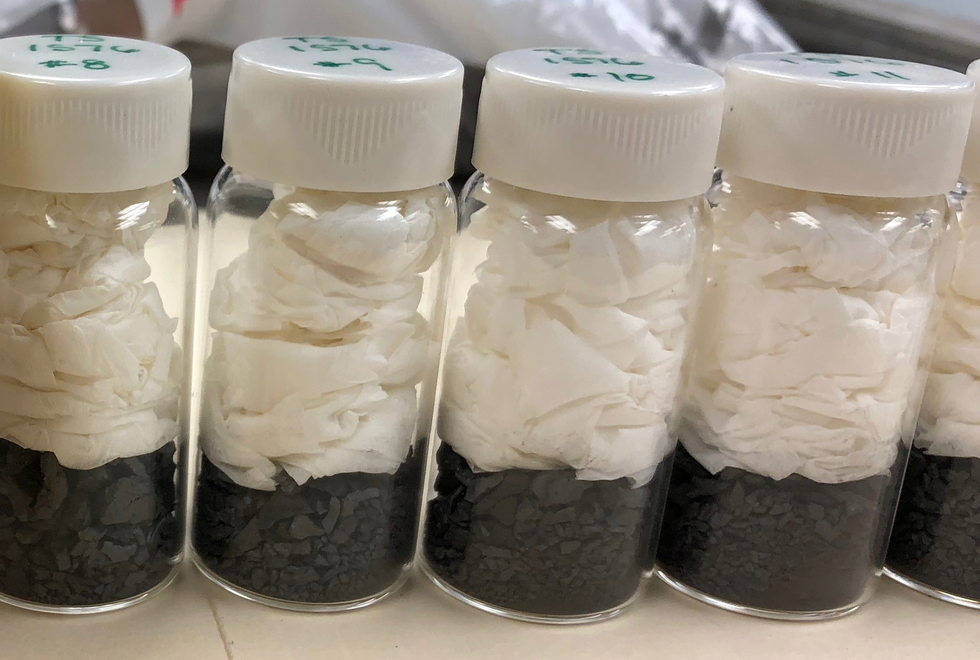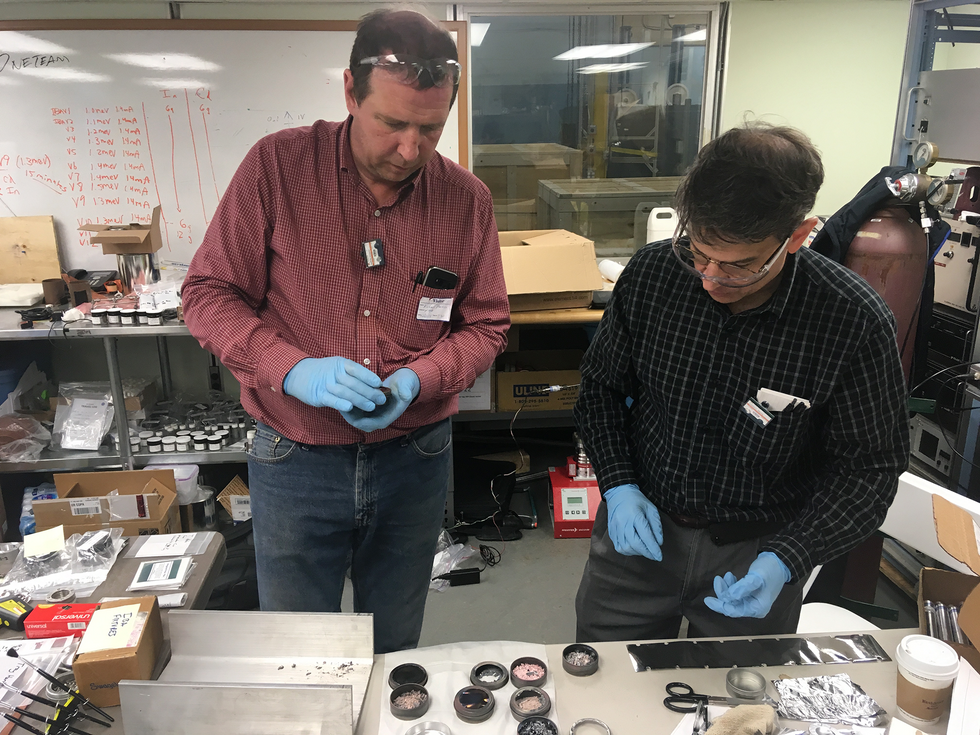
Physicists first suspected more than a century ago that the fusing of hydrogen into helium powers the sun. It took researchers many years to unravel the secrets by which lighter elements are smashed together into heavier ones inside stars, releasing energy in the process. And scientists and engineers have continued to study the sun’s fusion process in hopes of one day using nuclear fusion to generate heat or electricity. But the prospect of meeting our energy needs this way remains elusive.
The extraction of energy from nuclear fission, by contrast, happened relatively quickly. Fission in uranium was discovered in 1938, in Germany, and it was only four years until the first nuclear “pile” was constructed in Chicago, in 1942.
There are currently about
440 fission reactors operating worldwide, which together can generate about 400 gigawatts of power with zero carbon emissions. Yet these fission plants, for all their value, have considerable downsides. The enriched uranium fuel they use must be kept secure. Devastating accidents, like the ones at Chernobyl in Ukraine and Fukushima in Japan, can leave areas uninhabitable. Fission waste by-products need to be disposed of safely, and they remain radioactive for thousands of years. Consequently, governments, universities, and companies have long looked to fusion to remedy these ills.
Among those interested parties is NASA. The space agency has significant energy needs for deep-space travel, including probes and crewed missions to the moon and Mars. For more than 60 years,
photovoltaic cells, fuel cells, or radioisotope thermoelectric generators (RTGs) have provided power to spacecraft. RTGs, which rely on the heat produced when nonfissile plutonium-238 decays, have demonstrated excellent longevity—both Voyager probes use such generators and remain operational nearly 45 years after their launch, for example. But these generators convert heat to electricity at roughly 7.5 percent efficiency. And modern spacecraft need more power than an RTG of reasonable size can provide.
One promising alternative is
lattice confinement fusion (LCF), a type of fusion in which the nuclear fuel is bound in a metal lattice. The confinement encourages positively charged nuclei to fuse because the high electron density of the conductive metal reduces the likelihood that two nuclei will repel each other as they get closer together.

The deuterated erbium (chemical symbol ErD3) is placed into thumb-size vials, as shown in this set of samples from a 20 June 2018 experiment. Here, the vials are arrayed pre-experiment, with wipes on top of the metal to keep the metal in position during the experiment. The metal has begun to crack and break apart, indicating it is fully saturated.
NASA

The vials are placed upside down to align the metal with the gamma ray beam. Gamma rays have turned the clear glass amber.NASA
We and other scientists and engineers at
NASA Glenn Research Center, in Cleveland, are investigating whether this approach could one day provide enough power to operate small robotic probes on the surface of Mars, for example. LCF would eliminate the need for fissile materials such as enriched uranium, which can be costly to obtain and difficult to handle safely. LCF promises to be less expensive, smaller, and safer than other strategies for harnessing nuclear fusion. And as the technology matures, it could also find uses here on Earth, such as for small power plants for individual buildings, which would reduce fossil-fuel dependency and increase grid resiliency.
Physicists have long thought that fusion should be able to provide clean nuclear power. After all, the sun generates power this way. But the sun has a tremendous size advantage. At nearly 1.4 million kilometers in diameter, with a plasma core 150 times as dense as liquid water and heated to 15 million °C, the sun uses heat and gravity to force particles together and keep its fusion furnace stoked.
On Earth, we lack the ability to produce energy this way. A fusion reactor needs to reach a critical level of fuel-particle density, confinement time, and plasma temperature (called the
Lawson Criteria after creator John Lawson) to achieve a net-positive energy output. And so far, nobody has done that.
Fusion reactors commonly utilize two different hydrogen isotopes: deuterium (one proton and one neutron) and tritium (one proton and two neutrons). These are fused into helium nuclei (two protons and two neutrons)—also called alpha particles—with an unbound neutron left over.
Existing fusion reactors rely on the resulting alpha particles—and the energy released in the process of their creation—to further heat the plasma. The plasma will then drive more nuclear reactions with the end goal of providing a net power gain.
But there are limits. Even in the hottest plasmas that reactors can create, alpha particles will mostly skip past additional deuterium nuclei without transferring much energy. For a fusion reactor to be successful, it needs to create as many direct hits between alpha particles and deuterium nuclei as possible.
In the 1950s, scientists created various magnetic-confinement fusion devices, the most well known of which were
Andrei Sakharov’s tokamak and Lyman Spitzer’s stellarator. Setting aside differences in design particulars, each attempts the near-impossible: Heat a gas enough for it to become a plasma and magnetically squeeze it enough to ignite fusion—all without letting the plasma escape.
Inertial-confinement fusion devices followed in the 1970s. They used lasers and ion beams either to compress the surface of a target in a direct-drive implosion or to energize an interior target container in an indirect-drive implosion. Unlike magnetically confined reactions, which can last for seconds or even minutes (and perhaps one day, indefinitely), inertial-confinement fusion reactions last less than a microsecond before the target disassembles, thus ending the reaction.
Both types of devices can create fusion, but so far they are incapable of generating enough energy to offset what’s needed to initiate and maintain the nuclear reactions. In other words, more energy goes in than comes out. Hybrid approaches, collectively called magneto-inertial fusion, face the same issues.
Current fusion reactors also require copious amounts of tritium as one part of their fuel mixture. The most reliable source of tritium is a
fission reactor, which somewhat defeats the purpose of using fusion.
The fundamental problem of these techniques is that the atomic nuclei in the reactor need to be energetic enough—meaning hot enough—to overcome the Coulomb barrier, the naturally tendency for the positively charged nuclei to repel one another. Because of the Coulomb barrier, fusing atomic nuclei have a very small fusion cross section, meaning the probability that two particles will fuse is low. You can increase the cross section by raising the plasma temperature to 100 million °C, but that requires increasingly heroic efforts to confine the plasma. As it stands, after billions of dollars of investment and decades of research, these approaches, which we’ll call “hot fusion,” still have a long way to go.
The barriers to hot fusion here on Earth are indeed tremendous. As you can imagine, they’d be even more overwhelming on a spacecraft, which can’t carry a tokamak or stellarator onboard. Fission reactors are being considered as an alternative—NASA successfully tested the Kilopower fission reactor at the Nevada National Security Site in 2018 using a uranium-235 core about the size of a paper towel roll. The Kilopower reactor could produce up to 10 kilowatts of electric power. The downside is that it requires highly enriched uranium, which brings additional launch safety and security concerns. This fuel also costs a lot.
But fusion could still work, even if the conventional hot-fusion approaches are nonstarters. LCF technology could be compact enough, light enough, and simple enough to serve for spacecraft.
How does LCF work? Remember that we earlier mentioned deuterium, the isotope of hydrogen with one proton and one neutron in its nucleus. Deuterided metals—erbium and titanium, in our experiments—have been “saturated” with either deuterium or deuterium atoms stripped of their electrons (deuterons). This is possible because the metal naturally exists in a regularly spaced lattice structure, which creates equally regular slots in between the metal atoms for deuterons to nest.
In a tokamak or a stellarator, the hot plasma is limited to a density of 10
14 deuterons per cubic centimeter. Inertial-confinement fusion devices can momentarily reach densities of 1026 deuterons per cubic centimeter. It turns out that metals like erbium can indefinitely hold deuterons at a density of nearly 1023 per cubic centimeter—far higher than the density that can be attained in a magnetic-confinement device, and only three orders of magnitude below that attained in an inertial-confinement device. Crucially, these metals can hold that many ions at room temperature.
The deuteron-saturated metal forms a plasma with neutral charge. The metal lattice confines and electron-screens the deuterons, keeping each of them from “seeing” adjacent deuterons (which are all positively charged). This screening increases the chances of more direct hits, which further promotes the fusion reaction. Without the electron screening, two deuterons would be much more likely to repel each other.
Using a metal lattice that has screened a dense, cold plasma of deuterons, we can jump-start the fusion process using what is called a
Dynamitron electron-beam accelerator. The electron beam hits a tantalum target and produces gamma rays, which then irradiate thumb-size vials containing titanium deuteride or erbium deuteride.
When a gamma ray of sufficient energy—about 2.2 megaelectron volts (MeV)—strikes one of the deuterons in the metal lattice, the deuteron breaks apart into its constituent proton and neutron. The released neutron may collide with another deuteron, accelerating it much as a pool cue accelerates a ball when striking it. This second, energetic deuteron then goes through one of two processes: screened fusion or a stripping reaction.
In screened fusion, which we have observed in our experiments, the energetic deuteron fuses with another deuteron in the lattice. The fusion reaction will result in either a helium-3 nucleus and a leftover neutron or a hydrogen-3 nucleus and a leftover proton. These fusion products may fuse with other deuterons, creating an alpha particle, or with another helium-3 or hydrogen-3 nucleus. Each of these nuclear reactions releases energy, helping to drive more instances of fusion.
In a stripping reaction, an atom like the titanium or erbium in our experiments strips the proton or neutron from the deuteron and captures that proton or neutron. Erbium, titanium, and other heavier atoms preferentially absorb the neutron because the proton is repulsed by the positively charged nucleus (called an Oppenheimer-Phillips reaction). It is theoretically possible, although we haven’t observed it, that the electron screening might allow the proton to be captured, transforming erbium into thulium or titanium into vanadium. Both kinds of stripping reactions would produce useful energy.
As it stands, after billions of dollars of investment and decades of research, these approaches, which we’ll call “hot fusion,” still have a long way to go.
To be sure that we were actually producing fusion in our vials of erbium deuteride and titanium deuteride, we used neutron spectroscopy. This technique detects the neutrons that result from fusion reactions. When deuteron-deuteron fusion produces a helium-3 nucleus and a neutron, that neutron has an energy of 2.45 MeV. So when we detected 2.45 MeV neutrons, we knew fusion had occurred. That’s when we published our initial results in Physical Review C.
Electron screening makes it
seem as though the deuterons are fusing at a temperature of 11 million °C. In reality, the metal lattice remains much cooler than that, although it heats up somewhat from room temperature as the deuterons fuse.

Rich Martin [left], a research engineer, and coauthor Bruce Steinetz, principal investigator for the LCF project’s precursor experiment, examine samples after a run. NASA
Overall, in LCF, most of the heating occurs in regions just tens of micrometers across. This is far more efficient than in magnetic- or inertial-confinement fusion reactors, which heat up the entire fuel amount to very high temperatures. LCF isn’t cold fusion—it still requires energetic deuterons and can use neutrons to heat them. However, LCF also removes many of the technologic and engineering barriers that have prevented other fusion schemes from being successful.
Although the neutron recoil technique we’ve been using is the most efficient means to transfer energy to cold deuterons, producing neutrons from a Dynamitron is energy intensive. There are other, lower energy methods of producing neutrons including using an isotopic neutron source, like americium-beryllium or californium-252, to initiate the reactions. We also need to make the reaction self-sustaining, which may be possible using neutron reflectors to bounce neutrons back into the lattice—carbon and beryllium are examples of common neutron reflectors. Another option is to couple a fusion neutron source with fission fuel to take advantage of the best of both worlds. Regardless, there’s more development of the process required to increase the efficiency of these lattice-confined nuclear reactions.
We’ve also triggered nuclear reactions by
pumping deuterium gas through a thin wall of a palladium-silver alloy tubing, and by electrolytically loading palladium with deuterium. In the latter experiment, we’ve detected fast neutrons. The electrolytic setup is now using the same neutron-spectroscopy detection method we mentioned above to measure the energy of those neutrons. The energy measurements we get will inform us about the kinds of nuclear reaction that produce them.
We’re not alone in these endeavors. Researchers at
Lawrence Berkeley National Laboratory, in California, with funding from Google Research, achieved favorable results with a similar electron-screened fusion setup. Researchers at the U.S. Naval Surface Warfare Center, Indian Head Division, in Maryland have likewise gotten promising initial results using an electrochemical approach to LCF. There are also upcoming conferences: the American Nuclear Society’s Nuclear and Emerging Technologies for Space conference in Cleveland in May and the International Conference on Cold Fusion 24, focused on solid-state energy, in Mountain View, Calif., in July.
Any practical application of LCF will require efficient, self-sustaining reactions. Our work represents just the first step toward realizing that goal. If the reaction rates can be significantly boosted, LCF may open an entirely new door for generating clean nuclear energy, both for space missions and for the many people who could use it here on Earth.
From Your Site Articles
Related Articles Around the Web